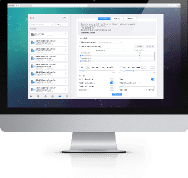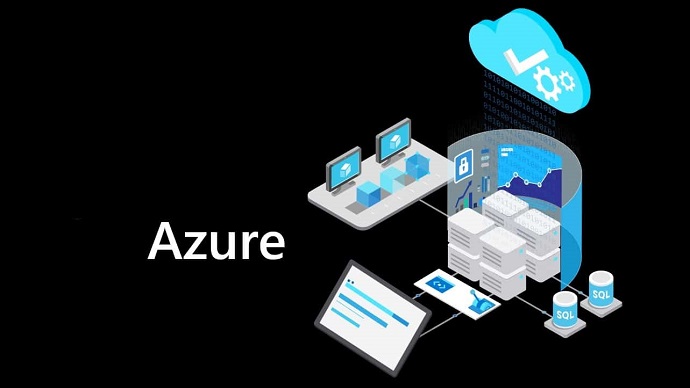Use VCE Exam Simulator to open VCE files

Certified Marketing Cloud Administrator Salesforce Practice Test Questions and Exam Dumps
Question 1
Northern Trail Outfitters wants a data model in Marketing Cloud which will prevent them from duplicating, or even triplicating, records.
How should the unique identifier of the data model be set up if the MobilePush and Email channels are used within the same account?
A. Strategically control the Contact Key values and tie records together across channels using this key.
B. Use a third-party system to identify and delete duplicate Contact Keys.
C. Use the auto-generated keys supplied by Marketing Cloud at time of record creation for each channel used.
Correct Answer: A
Explanation:
In Marketing Cloud, the Contact Key serves as the unique identifier across different channels and studios (such as Email Studio and Mobile Studio, which includes MobilePush and SMS). Ensuring that this key is consistently managed and strategically assigned is critical for maintaining a unified view of each contact and for avoiding the creation of duplicate or triplicate records in your data model.
Let’s examine each of the options in detail:
A. Strategically control the Contact Key values and tie records together across channels using this key.
This is the correct approach and the best practice recommended by Salesforce. By explicitly managing the Contact Key, organizations can ensure that the same person is represented once across channels. For instance, if an individual interacts via both email and mobile push, assigning them the same Contact Key ensures that Marketing Cloud treats them as one contact, allowing for more accurate tracking, segmentation, and personalization. This approach is also crucial for Journey Builder, which relies on the Contact Key to orchestrate messages across channels.
This also means you should avoid letting the system automatically generate Contact Keys in a way that might vary between channels. Instead, use a deterministic value (e.g., a unique customer ID from your CRM) and ensure it's consistently used across all channel integrations (Email, MobilePush, SMS, etc.).
B. Use a third-party system to identify and delete duplicate Contact Keys.
While deduplication tools or third-party solutions may help after duplicates are created, this is a reactive approach and doesn’t solve the root cause. Moreover, deleting contacts in Marketing Cloud is not always straightforward and can lead to unintended data loss or gaps in tracking. The goal should be to prevent duplicates proactively by managing Contact Keys, not relying on external tools to clean them up later.
C. Use the auto-generated keys supplied by Marketing Cloud at time of record creation for each channel used.
This option is problematic and contrary to best practices. If you let Marketing Cloud automatically generate keys for Email Studio, MobilePush, and SMS separately, the same individual might end up with multiple Contact Keys, one per channel. This breaks the single-customer view and can lead to over-messaging, disjointed communication, and poor customer experience. It also complicates analytics and journey management.
Summary: To maintain data hygiene and a unified customer profile in Marketing Cloud—especially when using multiple channels like Email and MobilePush—you must proactively assign and manage Contact Keys. This ensures one contact equals one profile across all systems. Therefore, option A is the best and correct choice.
Correct answer: A
Question 2
Northern Trail Outfitters was given a set of requirements from their governance team to protect against misuse of customer data. One item mandated Marketing Cloud users should NOT be able to export data without approval from the governance team, however, users should still be able to view data within the system.
Which feature would allow compliance with this requirement?
A. Audit Trail
B. IP Allowlist
C. Export Email Allowlist
Correct Answer: C
Explanation:
To comply with data governance requirements while still enabling users to perform their daily tasks, controlling data export capability is crucial. The requirement in this scenario is very specific: users can view data, but cannot export it without governance approval. Let's evaluate each of the options to determine which best aligns with this need.
A. Audit Trail
Audit Trail provides visibility into user activities within the system. It allows administrators and auditors to see what actions were taken, by whom, and when — such as logins, data exports, or content changes. However, Audit Trail is a monitoring tool, not a preventive one. While it allows for post-action analysis and helps in detecting misuse after it occurs, it does not prevent users from exporting data. Therefore, this option does not satisfy the requirement of restricting exports up front.
B. IP Allowlist
The IP Allowlist is a network security feature that restricts access to Marketing Cloud based on IP addresses. Only users logging in from approved IP addresses can access the system. While this adds an important layer of protection by ensuring that only trusted networks are used, it does not control data exports. Even if a user logs in from a trusted IP, they could still export data if permissions allow it. Thus, while beneficial, this does not directly address the specific governance requirement.
C. Export Email Allowlist
This is the most relevant and appropriate feature for the requirement. The Export Email Allowlist controls where exported data can be sent via email. It means that users can still access and view data within the platform, but they cannot export it unless the export is sent to an email address that is explicitly allowed by administrators. This mechanism effectively blocks unapproved data exports because any attempt to email exported data to an unauthorized address will be denied.
This feature enforces a governance checkpoint by ensuring that only approved recipients (e.g., someone on the governance team) can receive exported data. Therefore, even if someone tries to export data, it won’t reach an unauthorized destination, fulfilling the organization's compliance mandate.
Summary: The best way to restrict data exports while still allowing data visibility is to use the Export Email Allowlist, which controls which email addresses can receive exported data from Marketing Cloud. This allows for controlled, auditable data flows, in compliance with governance policies.
Correct answer: C
Question 3
Northern Trail Outfitters wants to send a custom survey to customers asking about their experience following a recent purchase.
Which feature should be used to create a survey form?
A. Interaction Studio
B. Smart capture
C. Analytics Builder
Correct Answer: B
Explanation:
When an organization like Northern Trail Outfitters wants to gather direct customer feedback in the form of a custom survey, it's important to use a Marketing Cloud feature that allows for form creation, data capture, and integration with journeys or lists. Let's examine the given options to determine the best fit for this use case.
A. Interaction Studio
Interaction Studio (now part of Marketing Cloud Personalization) is primarily used for real-time personalization and tracking of customer behavior across channels. It allows marketers to respond to customer interactions in real time and tailor content or offers accordingly. However, it is not designed to create survey forms. While it can personalize digital experiences, it does not provide native tools to build and deploy forms for data collection, making it unsuitable for this scenario.
B. Smart Capture
Smart Capture is a form-building tool within CloudPages in Salesforce Marketing Cloud. It allows marketers to easily create custom forms to collect data from subscribers and customers. The data collected using Smart Capture can be stored in Data Extensions, which are then available for email journeys, segmentation, or follow-up actions.
This is the most appropriate tool when a company wants to send out custom surveys or feedback forms. The forms can include a range of input fields such as text boxes, radio buttons, drop-down lists, and more. Once customers complete and submit the form, the responses are captured directly into Marketing Cloud, enabling immediate or automated follow-up communication.
Smart Capture also supports integration with Journey Builder, meaning customers who submit surveys can automatically be entered into follow-up email journeys based on their responses. This end-to-end capability — form creation, data capture, and automated follow-up — makes Smart Capture the best solution for this requirement.
C. Analytics Builder
Analytics Builder is focused on reporting and analytics within Marketing Cloud. It allows marketers to analyze email performance, audience engagement, and behavioral trends. While this is a critical tool for measuring campaign effectiveness or monitoring KPIs, it does not offer any functionality for building or displaying survey forms. Therefore, it cannot be used to meet the requirement of creating and sending custom surveys.
The company wants to send a custom survey to customers — this requires a tool that supports form creation and response handling. Among the listed options, Smart Capture is the only one designed for this exact purpose. It allows for building responsive forms, capturing customer inputs, and storing them for future actions within Marketing Cloud.
Correct answer: B
Question 4
A Marketing Cloud admin is asked to add a set of four query strings automatically to all the links in an email sent via Email Studio. Which solution should the admin suggest?
A. AMPscript for Marketing Cloud
B. Google Analytics 360
C. Parameter Manager
Correct Answer: C
Explanation:
When it comes to automatically appending query strings (such as UTM parameters or other custom identifiers) to all links within an email in the Salesforce Marketing Cloud, the most efficient and scalable solution is the use of Parameter Manager. Let’s analyze each option to determine why this is the best approach.
A. AMPscript for Marketing Cloud
AMPscript is a powerful scripting language in Marketing Cloud that allows users to customize email content, insert dynamic values, and perform conditional logic. While AMPscript can certainly be used to manually add query strings to individual links, doing so requires custom scripting for each link, which can become time-consuming, error-prone, and difficult to scale. This approach lacks the automation necessary when the requirement is to automatically apply the same set of query strings to all links in an email. It also introduces the risk of human error and inconsistency, especially in large email templates with many hyperlinks.
B. Google Analytics 360
Google Analytics 360 is an enterprise-level analytics tool that helps businesses track user interactions and behaviors across websites and marketing channels. While Marketing Cloud offers integrations with Google Analytics 360 — including support for UTM tagging — this integration is not designed to automatically append custom query strings to every email link. It is focused more on measuring engagement, analyzing traffic, and understanding user journeys rather than on link manipulation or automated tagging. Additionally, relying solely on GA360 for link parameterization lacks the granular, flexible control that Marketing Cloud users may require for their specific tracking needs.
C. Parameter Manager
Parameter Manager is a native feature in Salesforce Marketing Cloud that allows admins to define and automatically append query parameters to all hyperlinks in an email. It ensures consistency, accuracy, and efficiency when it comes to link tracking and tagging. Admins can set up parameters such as utm_source, utm_medium, utm_campaign, and utm_content, and these will be dynamically added to every URL during email send time.
This eliminates the need to manually edit every link or use custom scripting, thereby reducing errors and saving time. Moreover, Parameter Manager provides a centralized control panel, making it easy to manage or update query parameters without touching the email content directly. This is especially useful for organizations that run multiple campaigns and need consistent attribution tracking across emails.
Because the request is to automatically add a consistent set of query strings to all email links, the most scalable and purpose-built solution is Parameter Manager. AMPscript would be too manual and error-prone, and Google Analytics 360 does not serve the purpose of automatic link parameterization.
Correct answer: C
Question 5
What does Marketing Cloud authenticate when a user logs in through the user interface?
A. If the user is logging in within defined Business Hours
B. If the user is assigned a role in the parent business unit
C. If the user is logging in from an allowlisted IP address
Correct Answer: C
Explanation:
When a user attempts to log in to Salesforce Marketing Cloud through the user interface, the system performs a series of security and access validations to determine whether the login attempt should be allowed. One of the key authentication mechanisms involves verifying the IP address from which the login request is being made.
Let’s explore the options to understand why option C is the correct answer:
A. If the user is logging in within defined Business Hours
This concept of "Business Hours" is more relevant to Salesforce CRM rather than Marketing Cloud. In Salesforce CRM (like Sales or Service Cloud), business hours can be configured and used in automations, escalation rules, or workflows. However, Marketing Cloud does not enforce login restrictions based on defined business hours. Users can log in at any time unless otherwise restricted by security policies like IP allowlisting or session settings.
B. If the user is assigned a role in the parent business unit
In Marketing Cloud, user permissions and access to content are governed by roles and business unit assignments. While it is important for a user to have an assigned role to perform actions within a business unit, this is not something that is strictly authenticated during the login process itself. A user could still log in even if they lack an active role in the parent BU — their access and capabilities would simply be limited or restricted once inside the application.
C. If the user is logging in from an allowlisted IP address
This is the correct and most relevant security check performed during login. Salesforce Marketing Cloud supports IP Allowlisting (also known as "Login IP Ranges") to enhance security. When this feature is configured, users can only log in from pre-approved IP addresses. If a login attempt comes from an IP that is not on the allowlist, the login is either blocked or requires additional verification steps, depending on the settings.
IP Allowlisting is often used by organizations to ensure that only internal employees or known networks can access the system. This is particularly important for protecting sensitive customer data managed through Marketing Cloud.
Additionally, administrators can configure two-factor authentication, session timeout settings, and other login policies to further secure access. But the allowlisted IP address check is one of the first and critical steps in the login authentication process.
While roles and business hours are important in other contexts, Marketing Cloud prioritizes IP address verification for user logins. This helps protect against unauthorized access and ensures that login attempts originate from trusted sources.
Correct answer: C
Question 6
A Marketing Cloud admin has scheduled a query on a daily basis. They notice the query sometimes fails to execute.
How would the admin ensure a notification is received when the query fails?
A. Verify their Email Address in Alert Manager within the Setup app
B. Add their Email Address in the automation notification settings
C. Configure the “Event Notification Service” in Setup with their Email Address
Correct Answer: B
Explanation:
When automating data operations such as scheduled SQL queries in Salesforce Marketing Cloud, it's crucial for administrators to be alerted if a query fails. This allows them to quickly investigate the failure and take corrective action to prevent disruption in downstream processes. Marketing Cloud provides Automation Studio as the primary tool for building and running scheduled automations, and email notifications are part of its built-in monitoring features.
Let’s evaluate the options to determine which method will ensure the admin gets notified on query failure:
A. Verify their Email Address in Alert Manager within the Setup app
The Alert Manager in Marketing Cloud is primarily used to manage system-level alerts, such as issues with account configurations, key expirations, or other platform-level notifications. It is not specifically tied to automation notifications or query execution failures. Simply verifying your email here does not ensure that query-related failures will trigger a notification.
B. Add their Email Address in the automation notification settings
This is the correct approach. In Automation Studio, each automation has notification settings that allow you to specify email addresses for success, warning, and failure alerts. If the SQL query is embedded as a step within an automation (which is the most common and recommended approach), you can go into that automation’s configuration and define which email addresses should receive alerts in case the automation — or any of its steps — fails.
This setting ensures real-time alerts are sent whenever the query fails to run, helping the admin respond quickly. This is especially important if the query is a dependency for journeys, sends, or reporting.
C. Configure the “Event Notification Service” in Setup with their Email Address
The Event Notification Service (ENS) is a more advanced feature used for API-based event handling. It is designed to integrate with external systems (often via webhooks) to alert on specific system or user events, such as email bounces, opens, clicks, etc. While ENS is useful for integrating notifications into enterprise monitoring tools, it is not directly designed for automation or SQL query failure alerts. It also does not offer an email notification mechanism by itself — it requires further configuration through APIs or third-party systems.
For a Marketing Cloud admin who wants to be notified if a daily scheduled query fails, the most direct and supported method is to use the automation notification settings within Automation Studio. This is purpose-built for sending email alerts for success, warning, or failure events tied to automations that include SQL queries.
Correct answer: B
Question 7
Northern Trail Outfitters requires all subscriber files placed on the SFTP for import to be encrypted.
Which activity in Automation Studio could be used to decrypt the file to prepare for importing?
A. File Transfer Activity
B. Decryption Activity
C. Data Extract Activity
Correct Answer: A
Explanation:
When working with secure data transfers in Salesforce Marketing Cloud, especially when dealing with sensitive subscriber information, encryption is often required. If the organization mandates that all subscriber files on the SFTP must be encrypted, these files will likely be encrypted using a standard like PGP (Pretty Good Privacy). Before such a file can be imported into a data extension or list, it must be decrypted.
Salesforce Marketing Cloud’s Automation Studio provides an activity that handles both file decryption and movement between directories within the SFTP: the File Transfer Activity.
Let’s evaluate the three options to understand which one is appropriate:
A. File Transfer Activity
This is the correct answer. The File Transfer Activity is a versatile tool in Automation Studio used for:
Decrypting files (if encrypted using supported methods like PGP)
Unzipping files (if compressed)
Moving files between SFTP folders (e.g., from the ‘import’ folder to the ‘safehouse’)
For encrypted files, you can configure the File Transfer Activity to use a PGP private key (previously uploaded to Marketing Cloud) to decrypt the file automatically. This makes it the standard and recommended method for preparing encrypted files for further processing, such as importing data into the platform.
B. Decryption Activity
Although this option seems logically named, there is no such activity named "Decryption Activity" in Salesforce Marketing Cloud’s Automation Studio. Decryption is a function within the File Transfer Activity, not a standalone action. Therefore, this option is incorrect due to its inaccuracy about available features in the platform.
C. Data Extract Activity
The Data Extract Activity is used to generate exportable files from data extensions (e.g., CSV files), compress those files, or create tracking data reports. It is not used to decrypt incoming files. Instead, it is typically used after data has been processed or collected, not before an import. Thus, this activity does not serve the purpose of decrypting subscriber files from SFTP.
Summary:
To decrypt subscriber files that are placed in the SFTP for import into Marketing Cloud, the File Transfer Activity should be used. It is the only available tool in Automation Studio that supports decryption of encrypted files, specifically those encrypted with PGP, and is designed to securely prepare files for import by decrypting and moving them into the safehouse directory.
Correct answer: A
Question 8
A Marketing Cloud admin has configured a Tracking Extract which includes all subscriber attributes for their global regions. However, the admin notices accented characters in the customer’s names appear jumbled in the extracted file.
Which setting could solve this issue?
A. Change Column Delimiter to |
B. Change Character Encoding to UTF-8
C. Change Format to xml
Correct Answer: B
Explanation:
When exporting subscriber data from Marketing Cloud—particularly data that includes names, addresses, or other text fields that may contain international or accented characters—the character encoding used during the extract is critical to preserving the integrity of that data.
In this scenario, the admin has configured a Tracking Extract, which pulls engagement and subscriber data from Marketing Cloud. If the exported file contains jumbled or garbled characters—especially those with accents or from non-English alphabets—this is almost always a character encoding problem.
Let’s examine the options:
A. Change Column Delimiter to |
Changing the column delimiter (such as from a comma to a pipe character) can help avoid issues with data parsing—especially when field values contain commas—but it does not affect how characters are interpreted or displayed. Delimiters are about structure, not encoding. Since the issue here is garbled text characters, not improperly split columns, this is not the solution.
B. Change Character Encoding to UTF-8
This is the correct answer. UTF-8 (Unicode Transformation Format) is a widely-used character encoding standard that supports a vast array of global characters, including accented letters (like é, ñ, ü), Asian characters, Cyrillic script, and many others. When exporting data that contains such characters, setting the character encoding to UTF-8 ensures the characters are correctly encoded and preserved during the extract process.
If UTF-8 is not selected, the extract may default to ASCII or ANSI, which are more limited character sets that can’t handle non-English characters well. This results in garbled or incorrect characters in the exported file—exactly the problem the admin is facing.
C. Change Format to xml
Switching the format of the extract to XML affects the structure of the file but not the encoding unless it’s explicitly declared within the XML. While XML can carry UTF-8 encoded content, simply changing the format without setting the character encoding won’t guarantee that the characters are handled properly. Moreover, the issue at hand is with the representation of characters, not the data format.
Summary:
To resolve the issue of jumbled accented characters in extracted files, the most effective and technically appropriate solution is to ensure that the export uses UTF-8 character encoding. This encoding format accommodates the full range of international characters and is standard for global applications.
Correct answer: B
Question 9
Northern Trail Outfitters runs a nightly automation consisting of a File Transfer and a File Import. Following an update from the engineering team, the automation began failing. The Marketing Cloud admin suspects the CSV file now has an invalid format.
How could the admin receive a file of the bad data rows to confirm this theory?
A. Move the File Transfer to its own automation and include a notification email address
B. Update the Import definition to include a notification email address
C. Move the Import definition to its own automation and include a notification email address
Correct Answer: B
Explanation:
When importing data into Marketing Cloud via Automation Studio, the Import Activity can be configured to generate error notifications—including a file containing the bad or invalid data rows—if something goes wrong during the import process. This is critical for debugging data format issues such as malformed CSV files, mismatched column headers, invalid values, or encoding problems.
In the scenario described, the automation has started to fail after an update to the CSV file, which strongly suggests a formatting problem (e.g., too many or too few columns, unexpected characters, or incorrect delimiters). The admin needs to see the actual rows that are causing the failure to diagnose and correct the issue.
Let’s break down each option:
A. Move the File Transfer to its own automation and include a notification email address
This step would help if the issue were with transferring or decrypting the file (e.g., failed SFTP connection, corrupted file, failed decryption). However, the problem here is suspected to be within the CSV file’s contents, not with moving or decrypting it. So splitting out the File Transfer doesn’t provide additional insight into bad data rows.
B. Update the Import definition to include a notification email address
This is the correct approach. In Marketing Cloud, when configuring an Import Activity, admins can provide an email address to receive failure notifications. More importantly, when data import fails due to row-level issues, the system can generate a rejected rows file, typically containing the rows that failed validation and the reasons why. This file helps pinpoint the exact formatting or data issues in the CSV.
Updating the Import Activity (not the automation as a whole) to include a notification email address will ensure that whenever the import fails, the admin is notified and can review the bad data rows in the attached file. This is a direct and effective way to validate the theory that the format is now invalid.
C. Move the Import definition to its own automation and include a notification email address
While separating the Import Activity into its own automation might make it easier to debug by isolating its failure from the rest of the steps, this is not required just to receive the rejected data file. You can configure the Import Activity itself—within the same automation—to send notifications on failure, making this step unnecessary for resolving the current issue.
To confirm whether the CSV has a format issue and to view which rows are problematic, the admin should update the Import definition to include a notification email address. This will enable the system to send an email notification along with a rejected rows file, containing the data that couldn’t be processed.
Correct answer: B
Question 10
What are entry source types for Journey Builder?
A. Data Extension, Audience Studio, API Event, Date Based Event
B. Data Extension, CloudPages, Email List, API Event
C. Data Extension, Email List, API Event, Date Based Event
Correct Answer: A
Explanation:
In Salesforce Marketing Cloud's Journey Builder, the entry source defines how contacts are injected into a journey. Choosing the correct entry source type is essential because it determines when and how the journey is initiated for each individual contact. Journey Builder supports several entry sources that align with different use cases like real-time interactions, scheduled imports, or event-based automation.
Let’s look at each option to determine which includes valid Journey Builder entry sources:
This option includes:
Data Extension: This is one of the most common entry sources. Contacts are pulled from a predefined data extension (DE), either once or on a recurring schedule.
Audience Studio: Formerly known as Salesforce DMP (Data Management Platform), Audience Studio allows marketers to bring in segment-based audiences created using behavioral and demographic data. This can be a valid source when integrated with Journey Builder.
API Event: This allows contacts to enter a journey via real-time data using an API call. It’s useful for scenarios like transactional messages (e.g., order confirmations, password resets).
Date Based Event: Also known as Schedule Entry, this lets users trigger entries based on a date field within the data extension (e.g., birthday, contract renewal date). This is highly useful for time-sensitive campaigns.
All four entry types listed in Option A are legitimate and supported by Journey Builder, making this the correct answer.
Data Extension and API Event are valid entry sources.
CloudPages: While CloudPages can capture data (e.g., through Smart Capture forms), it is not itself an entry source in Journey Builder. Instead, it typically populates a Data Extension, which can then be used as the entry source.
Email List: Journey Builder does not directly use lists (like Email Studio does). Instead, it operates on Data Extensions.
This makes Option B incorrect due to inclusion of CloudPages and Email List.
Data Extension, API Event, and Date Based Event are valid.
Email List is not a valid Journey Builder entry source, as explained above.
Therefore, Option C is incorrect due to the inclusion of Email List.
In Marketing Cloud Journey Builder, supported entry sources include:
Data Extension
Audience Studio
API Event
Date-Based Event
Other sources like Email Lists and CloudPages are not directly usable as entry points, even though they can feed into a data extension that is used as a source.
Correct answer: A
Related Exams

Top Training Courses











SPECIAL OFFER: GET 10% OFF
This is ONE TIME OFFER

A confirmation link will be sent to this email address to verify your login. *We value your privacy. We will not rent or sell your email address.
Download Free Demo of VCE Exam Simulator
Experience Avanset VCE Exam Simulator for yourself.
Simply submit your e-mail address below to get started with our interactive software demo of your free trial.